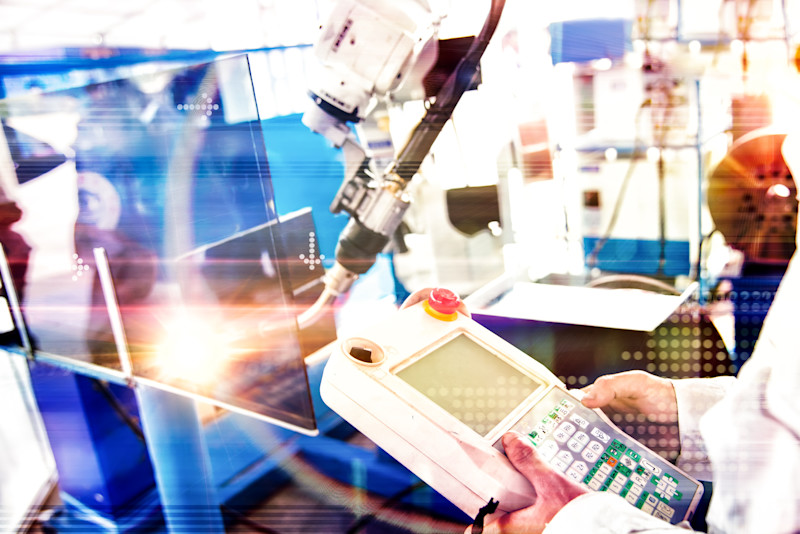The two categories of robots used in manufacturing are industrial grade robots and collaborative robots (cobots); adaptive robots were only introduced in 2019. We will examine how each new generation of robots is more flexible and intelligent than its predecessor.
Industrial grade robots
Industrial grade robots – which we are tempted to call traditional robots at this point – have been used in the automotive industry for more than 70 years. General Motors purchased the first industrial robot in 1960 and installed it in a plant in Trenton, N.J., to lift and stack hot pieces of metal from a die casting machine. A typical automobile assembly plant today contains hundreds of industrial robots working on automated production lines.
While the automotive industry is still the largest user, representing about 30% of the market, industrial robots are used for many applications throughout manufacturing, including palletizing, packaging, assembly, disassembly, pick and place, labeling, welding, painting, product inspection, and testing.
Collaborative robots
Collaborative robots – or cobots – have been used in manufacturing for about two decades. Cobots are specifically designed to interact with humans in a shared workspace and therefore minimize the risk of accidents or injuries. They are equipped with sensors to avoid collisions and ensure passive compliance in the event of unplanned contact.
Cobots are relatively lightweight compared to industrial robots and usually portable. Advances in sensors, artificial intelligence (AI), machine vision, and light detection and ranging (LiDAR), among other technologies, are making cobots easier to program, less expensive to deploy, and increasingly flexible in the types of tasks they can safely perform. The market for cobots was valued at $649 million in 2018 and is projected to grow at a calculated annual growth rate (CAGR) of 44.5% between 2019 and 2025, according to market research and consulting company Grandview Research.
There are three main categories of safety assurance in cobot systems: speed limits, force feedback, and external sensing. ISO/TS 15066, first introduced in 2006, ensures that all machines classified as cobots require at least one safety feature such as a safety-rated monitored stop, hand guiding, speed and separation monitoring, or power and force limiting. ISO/TS 15066, published in 2016, specifically addresses the new field of safety requirements for cobots in much more detail. Under TS 15066, the force and speed monitoring of the cobot is set based on application data, human contact area, and workspace hazards. Cobots are often allowed to operate at higher speeds when no persons are in the collaborative workspace or hazard zone.
Unlike industrial robots, cobots are relatively easy to program, even by workers with no knowledge of programming. Most use hand guiding – also called teaching by demonstration – in which the cobot learns while being guided through the sequence of movements needed to perform a task. The price of cobots, starting at about $25,000 and decreasing every year, makes them increasingly accessible to small to mid-sized manufacturers.
Adaptive robots
In 2019, a new type of robot – an adaptive robot – was launched by Chinese company Flexiv Ltd., spun out of Stanford University. Named Rizon, the adaptive robotic arm features artificial intelligence (AI) and machine learning (ML) integrated with proprietary force sensing technology and AI-based computer vision. These provide it with advanced perception and enable real-time adaptiveness that allows it to work in flexible or “uncertain environments.” Unlike other robots, it tolerates position variance, and its “transferable intelligence” allows it to be deployed between similar product lines or tasks.
Rizon can be programmed to perform a wide range of industrial tasks, including polishing, parts assembling, precision insertion, and force-based quality testing. Its integrated AI learning system enables it to learn both individual tasks and to combine them to perform more complex ones. Proof-of-concept trials are currently underway in the manufacturing industry, and Flexiv reports that the first applications it will launch include plugging and assembling, curved-surface processing, and flexible picking and sorting. Given the continual advancements in AI, ML, and sensing technologies, the Rizon robot is very likely a precursor to more adaptive robots to come!
The next article in our series will examine automated mobile robots, the descendants of automated guided vehicles.






